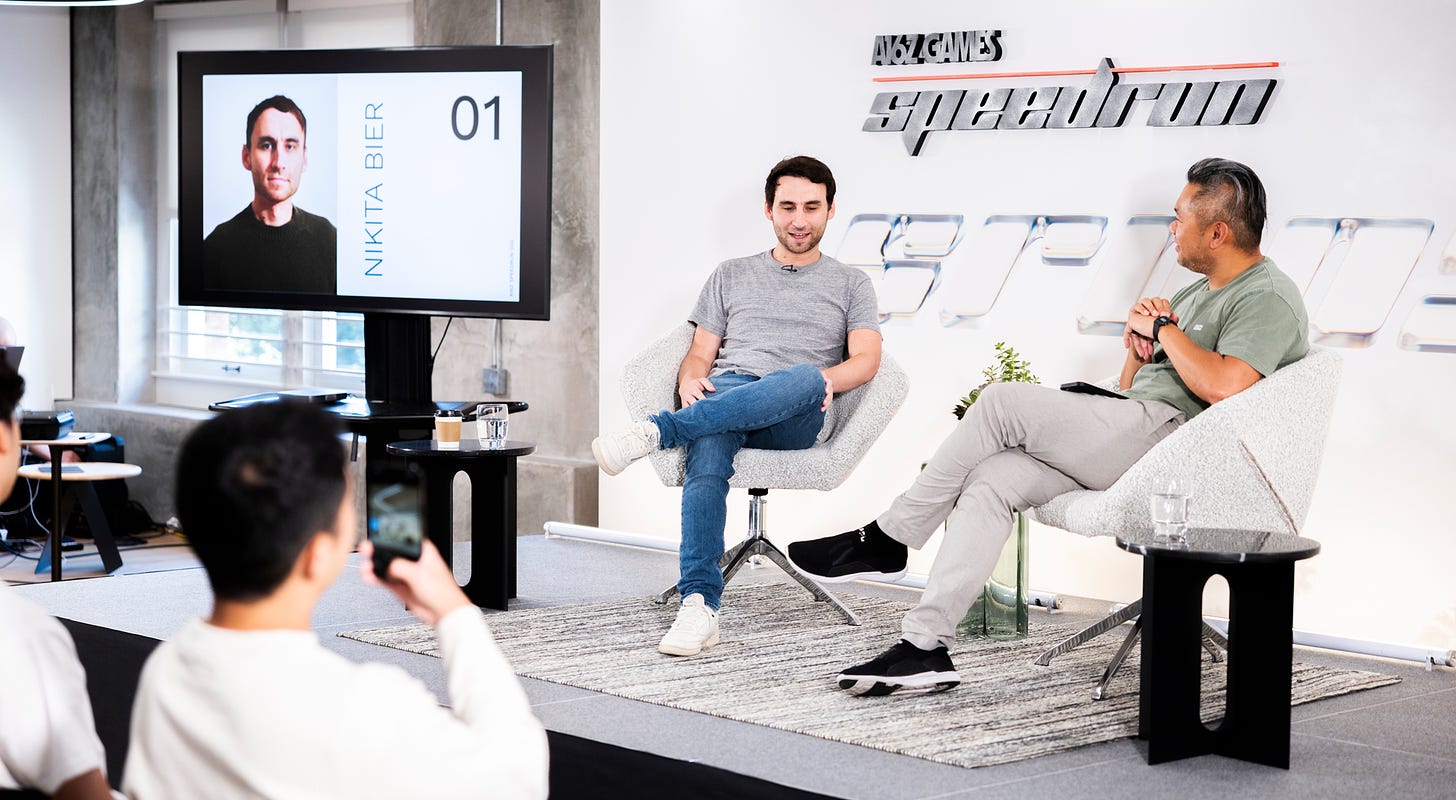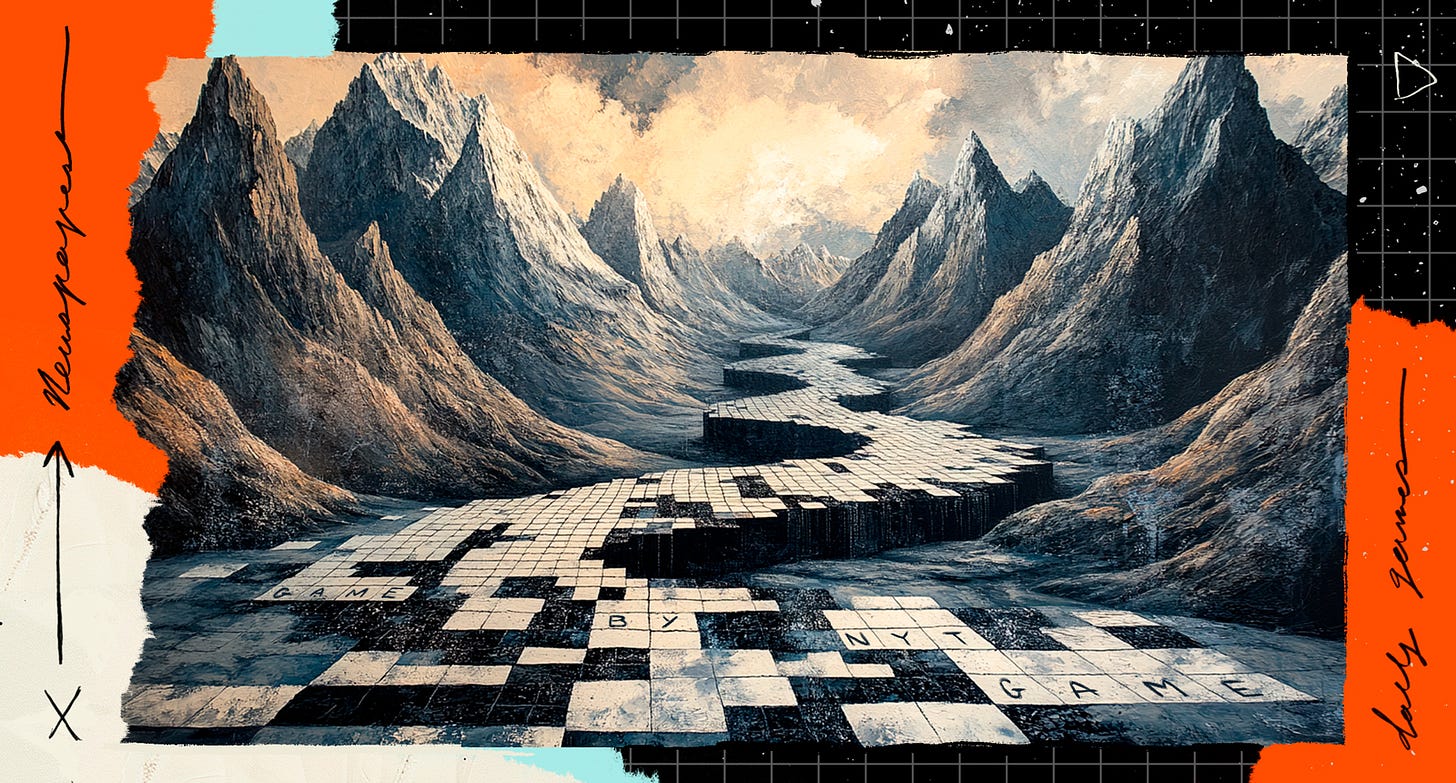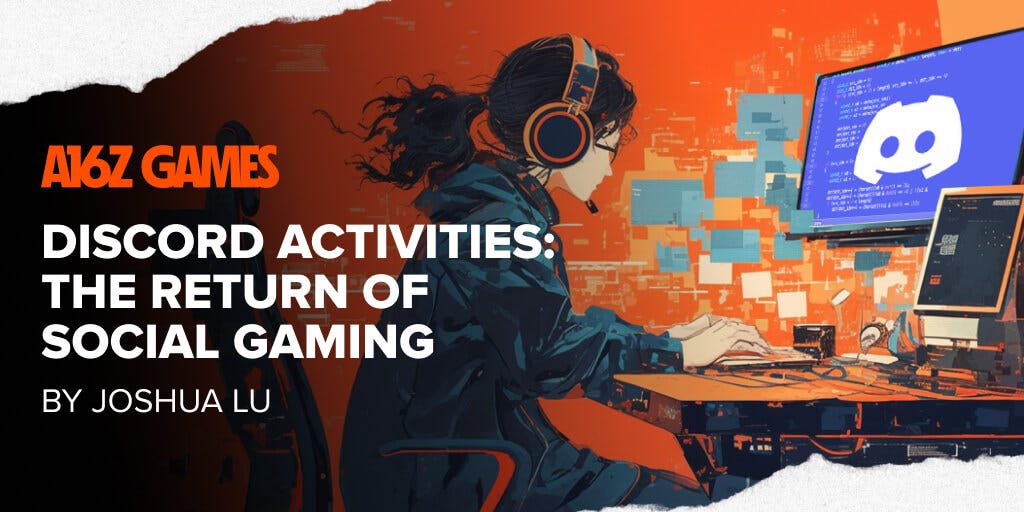The Media Titans Driving a Daily Gaming Revolution
We spoke with gaming leads at the New York Times and LinkedIn, plus legendary indie designer Zach Gage, about the world of bite-sized yet habit-forming daily games.
A16Z GAMES SPEEDRUN 004 applications remain open until September 30th! Time’s almost up to apply to the latest round of our Tech x Gaming startup accelerator. We invest $750k in each selected company.
Learn more and apply here.
The relationship between games and the news media goes way back.
The first ever newspaper crossword puzzle was introduced in the December 21, 1913 edition of The New York World, by a former violinist for the Pittsburgh Symphony Orchestra named Arthur Wynne.
The New York Times was slow to follow, but it came around. The bombing of Pearl Harbor, of all things, was the event that finally got The Gray Lady thinking about her games strategy.
In a memo dated Dec. 18, 1941, Sunday editor Lester Markel wrote to the paper’s publisher, Arthur Hays Sulzberger, arguing that adding a crossword puzzle might give the reading public some relief from stressful world events.
"We ought to proceed with the puzzle, especially in view of the fact that it is possible that there will now be bleak blackout hours,” Markel wrote, “or if not that, then certainly a need for relaxation of some kind or other.”1
Sulzberger liked the pitch, perhaps in part because it meant he’d no longer have to quietly buy copies of competing paper The Herald-Tribune to get his crossword fix.
Two months later, on February 15, 1942, founding New York Times crossword puzzle editor Margaret Farrar published the paper’s first puzzle in the Sunday edition, using the cheeky pseudonym “Anna Gram.” By 1950, the crossword was a daily feature, and the marriage between games and traditional media was sealed.
Roughly one human lifetime later, the New York Times is, improbably, still one of the world’s leading publishers of daily games, with a growing team of game developers and a roster of titles that includes Wordle, Spelling Bee, and—of course—The Crossword.
This week we spoke to New York Times Head of Games Jonathan Knight about the vision for the paper of record’s gaming ambitions. We also asked LinkedIn’s games lead Lakshman Somasundaram about the social media platform’s unexpected foray into gaming, and legendary indie game designer Zach Gage, whose web-based daily games platform Puzzmo was recently snatched up by the newspapers division of the 137-year-old media company Hearst Communications.
We wanted to know: With a century’s worth of history behind them, where are daily games going next?
That story is below. First, this week’s news from the future.
News From the Future
🎮 PlayStation 5 Pro Introduces AI-Powered “Super Resolution” (PlayStation)
On Tuesday Sony announced its upgrade to the PS5 Pro with a 9-minute presentation from PS5 Lead Architect Mark Cerny. The $699 device promises advanced ray tracing and high frame-rates for even the most demanding titles. Most interesting is the new AI-powered “Spectral Super Resolution,” which dynamically upscales games to look great at higher resolutions than they were originally designed for.
📺 Netflix Games surpasses 210m lifetime downloads (Mobilegamer.biz)
The streaming titan’s games strategy seems to be on the right track, according to the latest numbers from Appmagic, sourced by mobilegamer.biz. About 17% of the total 210 million downloads—36.6 million—comes from titles in the Grand Theft Auto series alone.
⛏️ After Movie Trailer Reveal, Minecraft Shows Its Road Map (Minecraft.net)
Minecraft is as relevant as it’s ever been, mixed reactions to its new movie teaser trailer not withstanding, and Microsoft has big plans for updating the game. Game lead Ryan Cooper announced that the team will be increasing the cadence of official updates for the title, and is currently “exploring ways to improve Minecraft’s multiplayer experience and make it easier to find and connect with friends.”
🌀 The Dreamcast at 25: One of Gaming’s Most Beautiful Failures (VGC)
When SEGA launched its final console in 1999, it was a massive technological leap over its competitors the PlayStation and Nintendo 64. It was a struggle from the beginning, though, with lawsuits and drama plaguing the Dreamcast’s development. Only a year after launch, the PlayStation 2 dealt the platform a death blow. This retrospective feature from VGC tells the story.
The Media Titans Driving a Daily Gaming Revolution
Long before he began leading The New York Times games division, Jonathan Knight was shipping games that expanded players’ imaginations for what games could be.
He was lead producer on The Sims 2 (2004), and the director of the cult classic Dante’s Inferno (2010). In the early 2010s, he led Zynga’s 'Ville and With Friends divisions.
A career highlight there came when Knight led the charge for the launch of New Words with Friends, which returned that beloved mobile game to growth.
“I think that's the part of my résumé that caught the attention of the New York Times,” Knight says. “I have this affinity for games that challenge your mind—what we call ‘smart fun’ at the New York Times.”
Since joining the Times in 2020, Knight has overseen a rapid expansion in the growth of the paper’s games efforts. The company has unified its games into a single app, which has since become a mainstay on mobile app store charts. The app got over 10 million downloads in 2023, Knight says, up from 5 million the year before.
“We already surpassed 10 million downloads this year and are on track for maybe 20 million,” Knight says, “so it’s an increasingly important destination for us.”
Wordle S-E-L-L-S
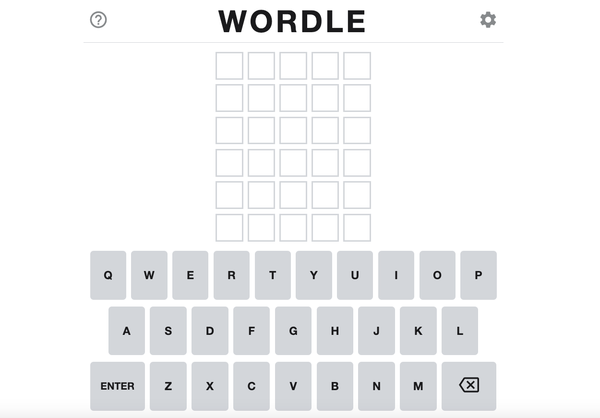
That growth was thrown into high gear on January 3rd, 2022, when the Times published an article about a viral daily web game called Wordle, developed by an ex-Reddit developer named Josh Wardle. “I found out about it when I read the article,” Knight says, “and I had a number of people forward it to me.”
Immediately, Knight says, he saw the potential for an acquisition. Before the month was out, he’d closed the deal, and the paper announced the acquisition of Wordle.
“There was just a lot of alignment there from the beginning,” Knight says of the deal with Wardle. “It even looked like a Times game—you know, a clean, elegant UX with a lot of white space.”
Wardle was also reportedly “overwhelmed” by the game’s success, according to interviews he gave at the time. “He was an eager and willing seller,” Knight says.
Knight calls the Wordle acquisition a “rocket booster” for the New York Times games strategy. “Since then, it’s been up and to the right.” Although the Times declined to give a specific headcount figure for its games operation, Knight said the paper now has “dozens of people” working on its games.
Wordle’s origins as a web-only game has had interesting implications for the paper, which says its largest source of traffic for its games still comes not from the rapidly-growing mobile app, but from mobile web browsers like Chrome and Safari. “The reason is Wordle,” Knight explains. “Tens of millions of people got habituated to playing it in their browser, and even though it’s been a thousand Wordles since then, a lot of people still play that way.”
That’s perfectly fine by the Times, which—after all—has been a web-native business since it first launched its website in 1996. The paper continues to launch new games, like Connections (2023), with full support for mobile and desktop web browsers.
What Makes a Game a Times Game?
When making new games, Knight says, the paper always keeps a few goals in mind. A New York Times game has to “challenge your brain” and be “time well spent.”
"We respect people’s choices about when they want to solve the puzzles throughout the day,” Knight says. “We’re not going to nag you into coming back into the app 24-7. It’s a one-a-day solve.”
The paper also wants to stay focused on games that unify players by presenting the same challenge to all players on any given day. “We’re all trying to get to the same answer together, which is critical,” Knight says.
“We’re all solving the same puzzle every day, and it’s made by a real human,” Knight says. This last aspect, of human-created puzzles, is perhaps the most critical aspect of the Times approach to daily games, Knight says. “The idea is you kind of enter into this relationship with the puzzle constructor,” he says. “They’re trying to trick you. They have something in mind, and you have to work it out. And when you finally get it, it’s a great feeling. An aha moment.”
This idea—of single-player games that are fundamentally charged with meaning by human relationships—is also at the core of the games strategy of another, somewhat surprising entrant into the daily games space: Microsoft owned social media giant LinkedIn.
All Work and Some Play
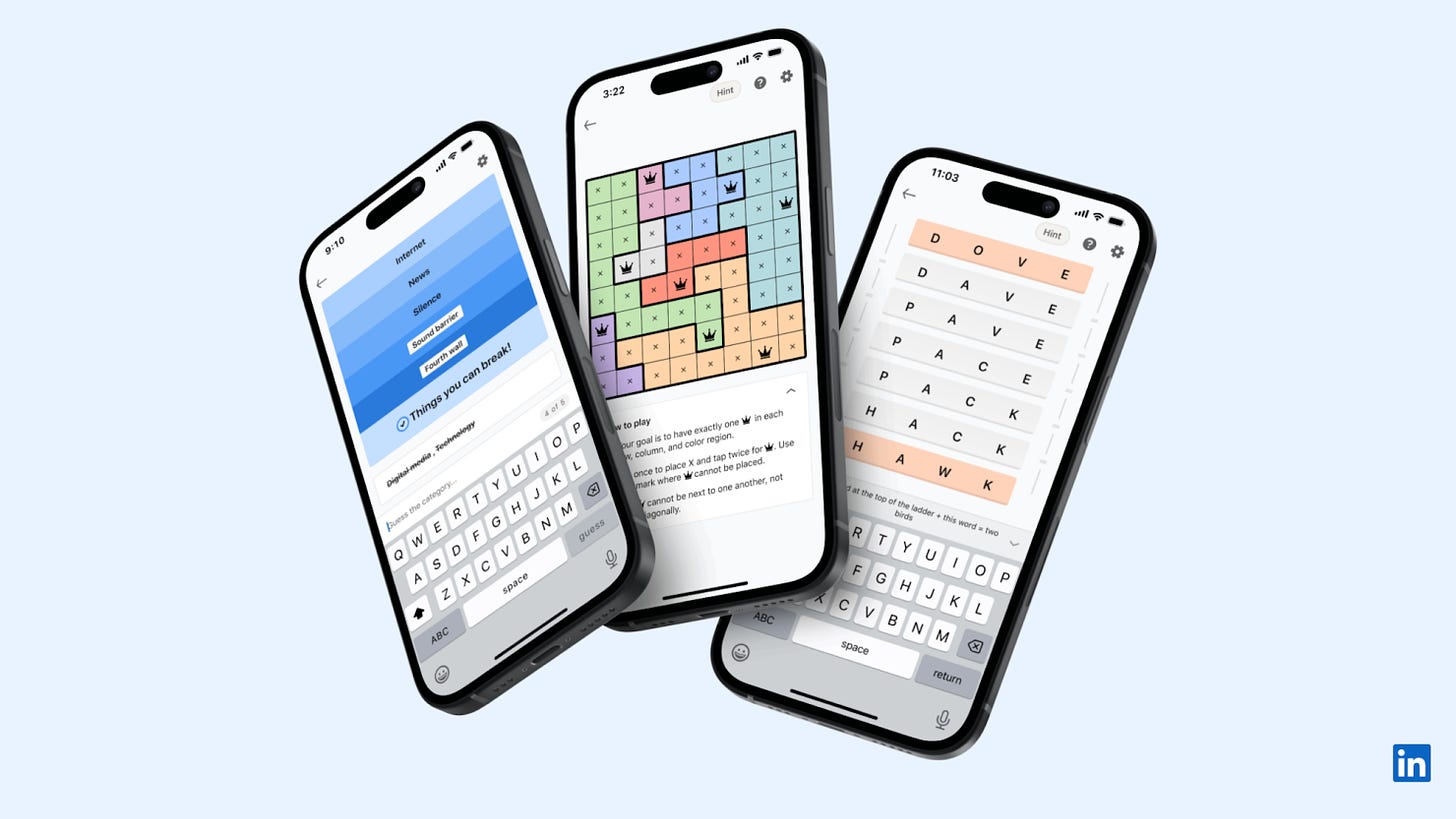
The last company you’d expect to launch a games initiative would be LinkedIn.
And yet, this May the workplace-focused social media network introduced its over one billion members to three original daily games. Each of the games—Queens, Pinpoint, and Crossclimb—share obvious similarities with New York Times titles. They’re quick, human-created daily puzzles that present the same challenge to all players each day.
Perhaps most surprisingly, the games are really good, due in part to LinkedIn’s decision to bring in world-class puzzle experts to design the games. Each of the Sudoku-like Queens daily puzzles are created by Thomas Snyder, a three-time winner of the World Sudoku Championship. The latter two word games are edited by Paolo Pasco who won the 2024 American Crossword Puzzle Tournament
Lakshman Somasundaram—who leads the “Moonshots” organization at LinkedIn, which includes its games initiative—says that though it might not be obvious at first, the introduction of games to LinkedIn’s platform is actually a logical extension of the platform’s mission.
“The mission hasn’t changed,” Somasundaram says. “It’s about connecting the world’s professionals.”
But, Somasundaram argues, the way professionals connect has changed. It used to be that the primary way professionals connected was via networking events or conferences, where you’d exchange business cards. “So it made sense that the first LinkedIn product was basically taking business cards online,” he says.
“But now, a lot more people network by having fun together,” Somasundaram says. ”It’s by playing pool at an offsite together, or little jokes shared over Slack. That’s how bonds are actually formed. And we want LinkedIn to keep up with that.”
That’s why, if you play one of LinkedIn’s titles, you’ll notice a strong emphasis on social leaderboard features, including the ability to positively impact the overall group score of your alma mater or, for students, a school you’re currently attending.
Somasundaram says that LinkedIn’s embrace of games came in an unexpected way. “It didn’t start out as us saying ‘oh, we want to get into the gaming space.’ Instead, we started by thinking of creative new ways we can help people deepen and reignite relationships. And we realized that a lot of that happens by people doing things like crosswords, or Sudoku, and then talking about them.”
For that reason, Somasundaram says, the company has no intention of getting into the more “hardcore” games. “We’re not in it to enter the games industry. We’re in it to give people better ways to connect.”
Somasundaram says the LinkedIn team is committed to a few constraints when introducing new games. “We’re gonna stick with games that are actually a productive break from the workday,” he says, using the phrase “thinking-oriented" to describe the types of games that might “give you a chance to exercise your mind in-between meetings.”
Somasundaram says LinkedIn is probably never going to introduce any games that are “a huge time suck” which might distract people from work. “That’s not our goal,” he says. “We do not want to be at a spot where people are playing our games for hours on end.”
Instead, the perfect LinkedIn game would offer players “a quick, five-minute break that will make you more productive and successful at work, both because they reignite your mind, and also because they might spark a new connection or relationship.”
So far, Somasundaram says, the strategy’s working. But he and his team at LinkedIn are far from the only ones aiming to compete with the New York Times in the daily games space.
The Indie Challenger
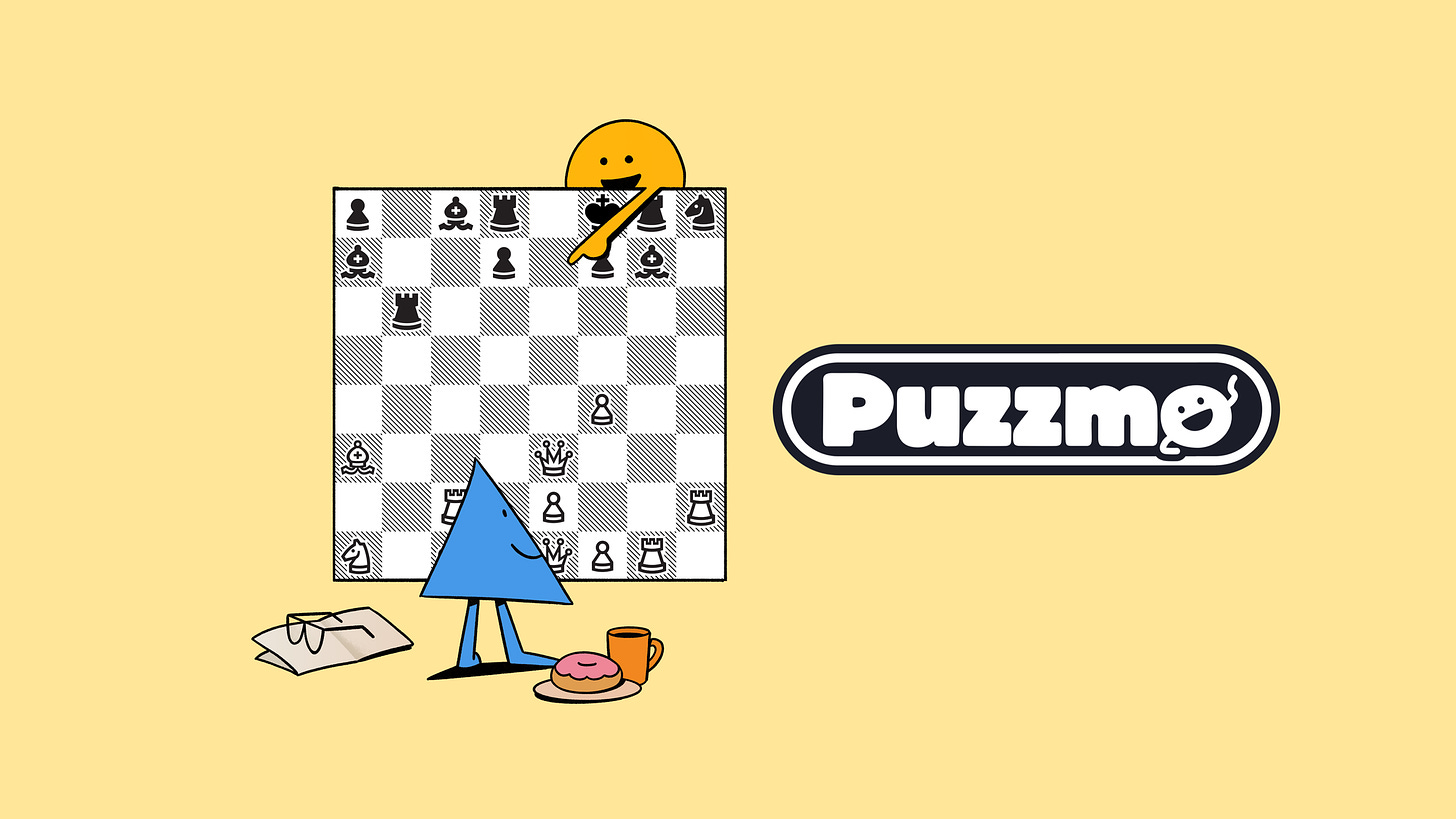
Zach Gage is coming for the New York Times.
“Some of their games are good games,” Gage says with a smile. “But we’ve got a lot more games. We’re making a lot of great, original games very quickly.”
Gage, now the co-founder of the web-based puzzle games platform Puzzmo, is still best known as an independent game designer responsible for polished, brilliantly-designed mobile games like Spelltower and Ridiculous Fishing.
In more recent years, Gage’s work began to focus increasingly on smaller, daily puzzle-style games, somewhat like those you might find in a newspaper, though always with an unexpected twist. Really Bad Chess, for example, randomizes the pieces on the board at the start of each game. Good Sudoku is an AI-powered sudoku app that aims to teach players to get better at the game.
For years, Gage shipped his games individually as iOS and Android apps. But as time dragged on, he started to wonder whether he might be better off building his own platform.
“You've got to understand, it was like 2019, 2020,” Gage says. “Everybody was getting into service-based economies. Apple has a service-based economy. Google has a service-based economy. Every free-to-play platform is trying to pivot into some kind of service, subscription service, whatever.”
So Gage and collaborator Orta Therox came up with a plan: build a web-based platform for original puzzle games and try to get bought. “We didn’t want to run a company. We’re not VC people,” Gage says. “We didn’t want to raise money or write contracts. But we were like… there's no way that someone's not going to want to buy us, because we're going to look like the number two to the New York Times.”
The bet paid off. Hearst announced its acquisition of Gage and Therox’s Puzzmo platform in December 2023. “Hearst bought us before we even had a user, before we were even public,” Gage says. “They saw what we were doing and they got it and they bought it. And now we're not having to run a company and we get to build this awesome thing.”
Now, Gage and team get to focused on what they care about: making great games.
And Gage is passionate about competing with the Times, who he sees as his only real competiton. “Maybe this is offensive to the little players [in the daily games space], but like, you know, honestly the only player in this space really that matters is the New York Times,” Gage says. “It just felt like such a hole in the fabric of spacetime that, you know, nobody else was serving this audience. We could have way more games than the New York Times.”
“It's just fruit lying around on the ground. You know, we're just picking up all of these ideas and trying the stuff that, frankly, nobody else was trying,” says Gage. “And now, a lot of other people are trying to do it. LinkedIn is trying to do this stuff. The New York Times is taking some inspiration from us too.”
Gage sees Puzzmo’s tech stack as one of his competitive advantages. The platform hasn’t yet launched as a mobile app, in part because Gage and team see the web as a better platform for moving fast and experimenting.
“Being able to launch games fast and try a lot of stuff is really important to us,” Gage says. “And so we are working on an app, but we are really cognizant that we want to do it properly and build it in a browser first.”
This focus on speed, says Gage, is key to his team’s plans to grow the platform and compete.
“We've already launched eight or nine games,” he says. “We've got a whole lot more on the docket.”
📱 Discord Activities: The Return of Social Gaming
In this new editorial deep dive, A16Z GAMES’s Joshua Lu argues that Discord Activities represents a significant opportunity for developers to create the next generation of web-based games.
💼 Jobs Jobs Jobs
There are currently over 100 open jobs listings across both the A16Z GAMES portfolio and our SPEEDRUN portfolio. For the freshest games industry jobs postings, be sure to follow our own Caitlin Cooke and Jordan Mazer on LinkedIn.
Join our talent network for more opportunities. If we see a fit for you, we'll intro you to relevant founders in the portfolio.
You are receiving this newsletter since you opted in earlier; if you would like to opt out of future newsletters, you can unsubscribe immediately.
This newsletter is provided for informational purposes only, and should not be relied upon as legal, business, investment, or tax advice. You should consult your own advisers as to those matters. This newsletter may link to other websites and certain information contained herein has been obtained from third-party sources. While taken from sources believed to be reliable, a16z has not independently verified such information and makes no representations about the enduring accuracy of the information or its appropriateness for a given situation.
References to any companies, securities, or digital assets are for illustrative purposes only and do not constitute an investment recommendation or offer to provide investment advisory services. Any references to companies are for illustrative purposes only; please see a16z.com/investments. Furthermore, this content is not directed at nor intended for use by any investors or prospective investors, and may not under any circumstances be relied upon when making a decision to invest in any fund managed by a16z. (An offering to invest in an a16z fund will be made only by the private placement memorandum, subscription agreement, and other relevant documentation of any such fund which should be read in their entirety.) Past performance is not indicative of future results.
Charts and graphs provided within are for informational purposes solely and should not be relied upon when making any investment decision. Content in this newsletter speaks only as of the date indicated. Any projections, estimates, forecasts, targets, prospects and/or opinions expressed in these materials are subject to change without notice and may differ or be contrary to opinions expressed by others. Please see a16z.com/disclosures for additional important details.
Quotes about the history of the NYTimes crossword come from this 1992 article in the paper: https://www.nytimes.com/1992/02/16/magazine/bambi-is-a-stag-and-tubas-dont-go-pahpah-the-ins-and-outs-of-across.html



